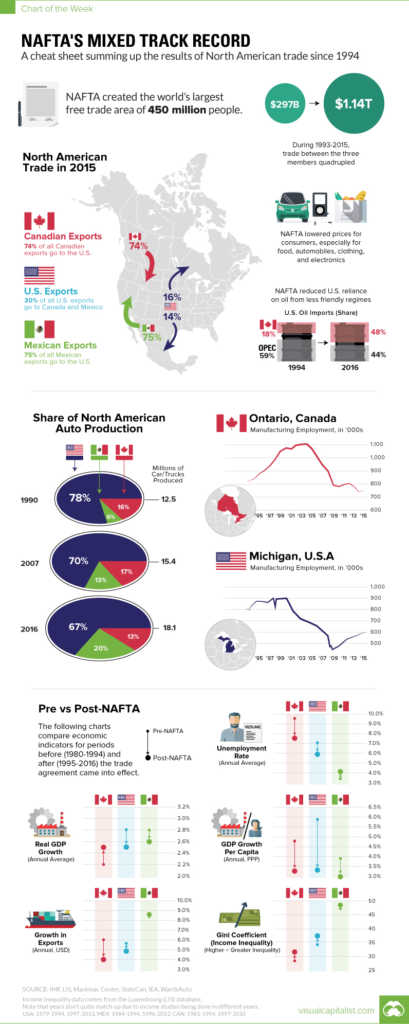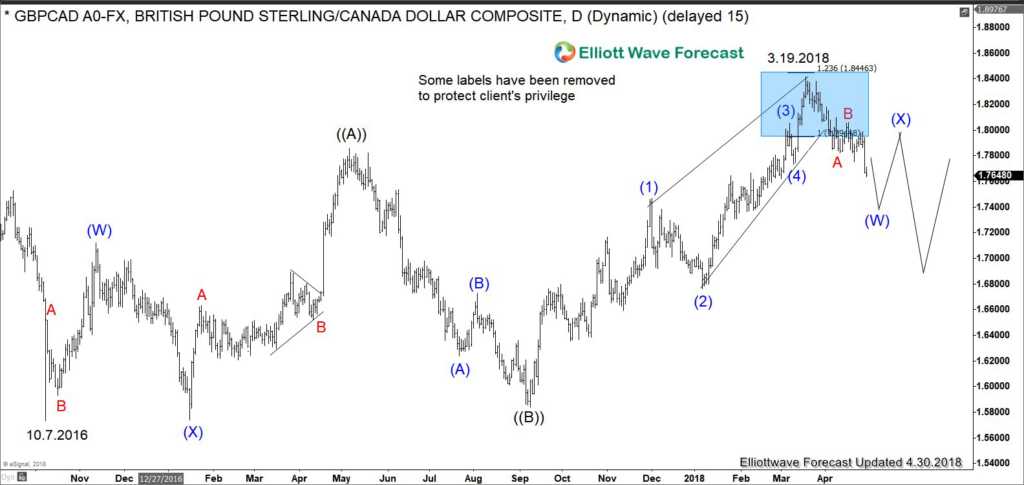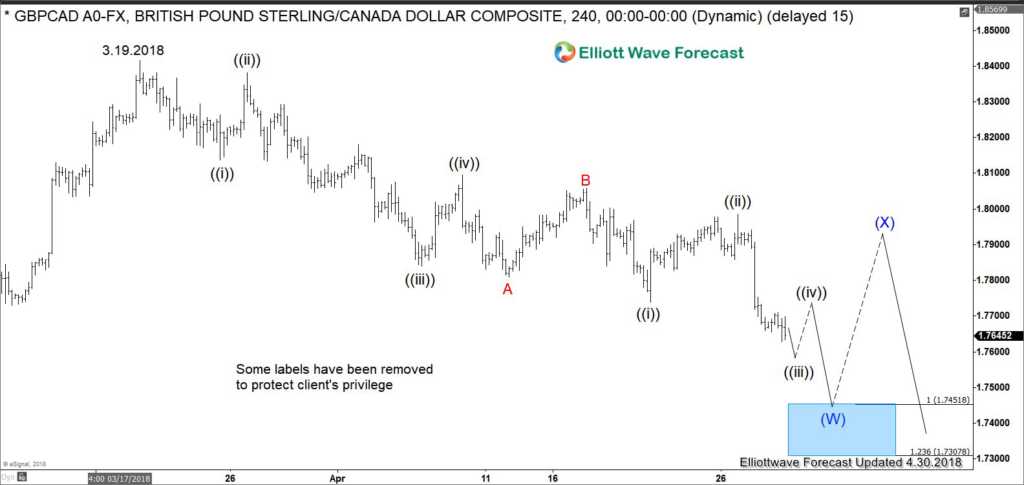Bank of Canada on Holding Cycle due to NAFTA’s Downside Risk
Bank of Canada has signaled it’s not in a rush to pursue aggressive interest rate hikes. The Bank cited one of the reasons as NAFTA’s downside risk. With the U.S. threatening to withdraw from NAFTA, it could push up cost, prices, and hurt economic growth.
North American Free Trade Agreement (NAFTA) officially came into effect on January 1, 1994. The goal was to make it easier for companies in the U.S., Canada, and Mexico to do business across borders. They do this by eliminating tariffs and trade restrictions among the three countries. By boosting the economic integration, there will be increased economic prosperity in all three countries.
The picture below from visual capitalist illustrates Nafta’s track record since 1994
The Push for NAFTA renegotiation
NAFTA has become a hot button issue again lately. U.S. President Donald Trump labelled NAFTA as “the worst trade deal” ever signed by the U.S. He blames NAFTA for wiping out US manufacturing jobs as it allows companies to move factories to Mexico where labor is cheaper. In April 2017, Trump threatened to pull out of NAFTA agreement. Canada and Mexico insisted to renegotiate it instead and Trump agreed.
Recent push for tentative Nafta deal has come up short with ministers from U.S, Canada, and Mexico not meeting again until May 7. Officials from the three countries have previously targeted May 1 for completion of Nafta deal. This is due to U.S. planned trip to China for trade negotiation and also expiry of U.S. steel and aluminum tariff exemption. The U.S. gave Canada and Mexico exemption from the steel tariff conditional upon successful completion of a Nafta deal. With the current delay, President Trump may need to give a deadline extension to allow the three countries finalize Nafta deal.
Time however is running out for the U.S. to get a deal through Congress before midterm elections in November, and Mexico also faces elections on July 1. Negotiators are now close to deals on Nafta chapters including technical barriers to trade, state-owned enterprises, financial services and environment. Remaining sticking points are the rules of origin for cars and their components.
GBPCAD Daily Elliott Wave Analysis
GBPCAD Daily chart above shows that cycle from 10.7.2016 low (1.5729) has ended at 1.8415 on 3.19.2018 high. From there, pair starts to pullback in 3, 7, or 11 swing to correct cycle from 10.7.2016 low. The technical analysis on the pair seems to suggest that Canadian Dollar (Loonie) may rally and a positive outcome of the Nafta deal this month could be the catalyst for the move lower in the pair.
GBPCAD 4 Hour Elliott Wave Analysis
In the 4 hour GBPCAD chart, we could see that the move lower from 3.19.2018 peak seems incomplete and pair could continue lower to 1.7308 – 1.745 area to complete Intermediate wave (W) and end a zigzag Elliott Wave structure from 3.19.2018 high. Afterwards, pair should bounce in Intermediate wave (X) to correct cycle from 3.19.2018 before possibly turning lower again and continue the correction to the cycle from 10.7.2016 like the Daily Chart above shows. The technical outlook again seems to be favoring more Canadian Dollar (Loonie) strength, perhaps in anticipation of favorable news on the Nafta deal.
If you enjoy this article, take our 14 days FREE trial to get updates to Elliott Wave charts for 78 instrument, access to trading signal, 24 hour chat room, live sessions and more. Welcome to EWF!
Back



